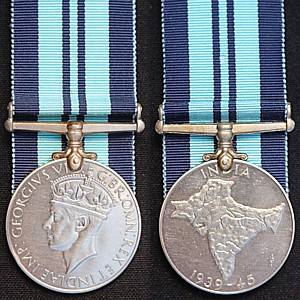India
The British Indian Army and Air Force (IAF) were the key British Empire fighting presence in the Burma Campaign. The Royal Indian Air force's first assault mission was carried out against Japanese troops stationed in Burma. The IAF played an instrumental role in halting the advance of the Japanese army in Burma. The first IAF air strike was executed against the Japanese military base in Arakan. Subsequently, the IAF flew strike missions against the Japanese airbases at Mae Hong Son, Chiang Mai, and Chiang Rai in northern Thailand.
The British Indian Army was key to breaking the siege of Imphal when the westward advance of Imperial Japan came to a halt. The army formations included the Indian III Corps, IV Corps, the Indian XXXIII Corps, and the Fourteenth Army. As part of the new concept of Long-Range Penetration (LRP), Gurkha troops of the Indian Army were trained in the present state of Madhya Pradesh under their British commander (later Major General) Orde Charles Wingate, DSO.
British and British colonial forces would be eligible to receive the Burma Star. Colonial forces involved in non-operational matters would be eligible to receive the WW II India Service Medal.
The 36mm, circular cupro-nickel India Service Medal 1939-1945 was a campaign medal of the Commonwealth. It was awarded to Indian Forces for three years of non-operational service in India during the World War II. Combat forces received the traditional British military medals. The obverse contains the crowned effigy of King George VI facing left, with the legend GEORGIVS VI D:G:BR:OMN:REX ET INDIAE IMP (George VI by the grace of God King of Great Britain and Emperor of India). The reverse depicts a relief map of India and the words INDIA above and 1939-45 below. It was awarded unnamed and with no clasps.

India WW II Service Medal
The British Indian Army and Air Force (IAF) were the key British Empire fighting presence in the Burma Campaign. The Royal Indian Air force's first assault mission was carried out against Japanese troops stationed in Burma. The IAF played an instrumental role in halting the advance of the Japanese army in Burma. The first IAF air strike was executed against the Japanese military base in Arakan. Subsequently, the IAF flew strike missions against the Japanese airbases at Mae Hong Son, Chiang Mai, and Chiang Rai in northern Thailand.
The British Indian Army was key to breaking the siege of Imphal when the westward advance of Imperial Japan came to a halt. The army formations included the Indian III Corps, IV Corps, the Indian XXXIII Corps, and the Fourteenth Army. As part of the new concept of Long-Range Penetration (LRP), Gurkha troops of the Indian Army were trained in the present state of Madhya Pradesh under their British commander (later Major General) Orde Charles Wingate, DSO.
British and British colonial forces would be eligible to receive the Burma Star. Colonial forces involved in non-operational matters would be eligible to receive the WW II India Service Medal.
The 36mm, circular cupro-nickel India Service Medal 1939-1945 was a campaign medal of the Commonwealth. It was awarded to Indian Forces for three years of non-operational service in India during the World War II. Combat forces received the traditional British military medals. The obverse contains the crowned effigy of King George VI facing left, with the legend GEORGIVS VI D:G:BR:OMN:REX ET INDIAE IMP (George VI by the grace of God King of Great Britain and Emperor of India). The reverse depicts a relief map of India and the words INDIA above and 1939-45 below. It was awarded unnamed and with no clasps.

India WW II Service Medal
Website Maintained by Keith Emroll